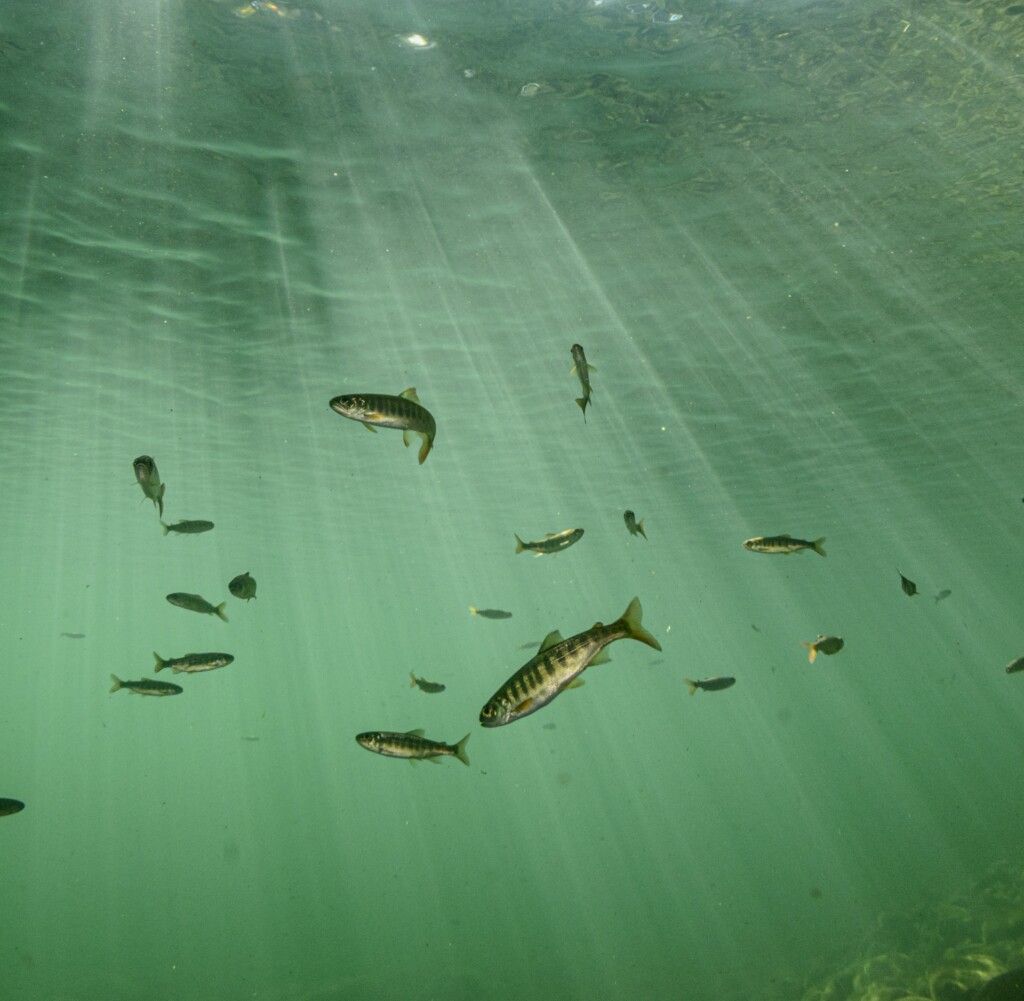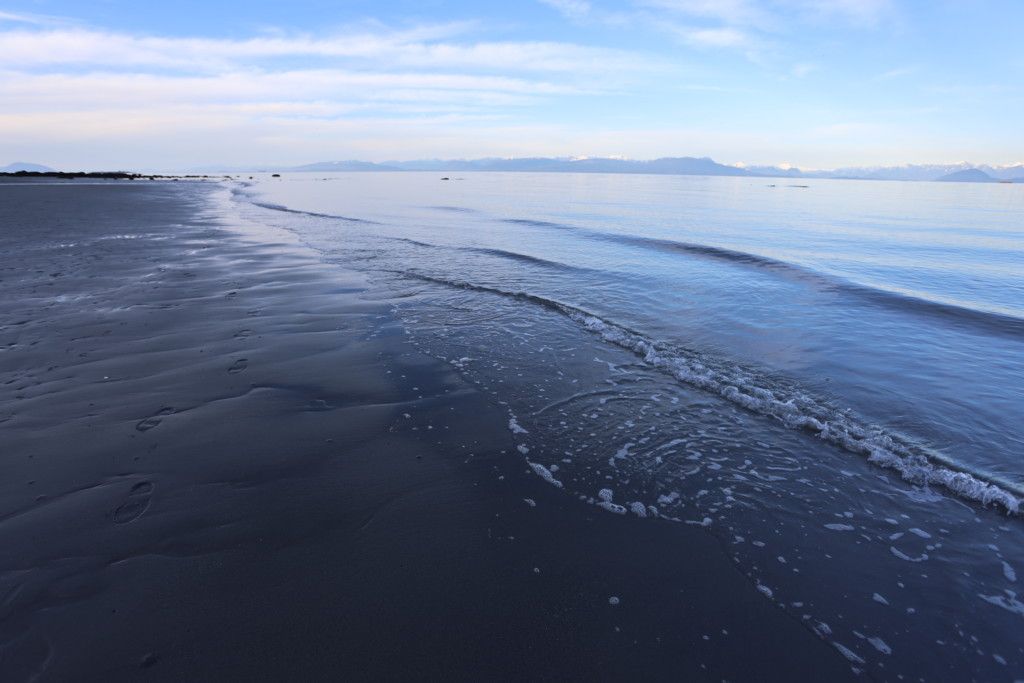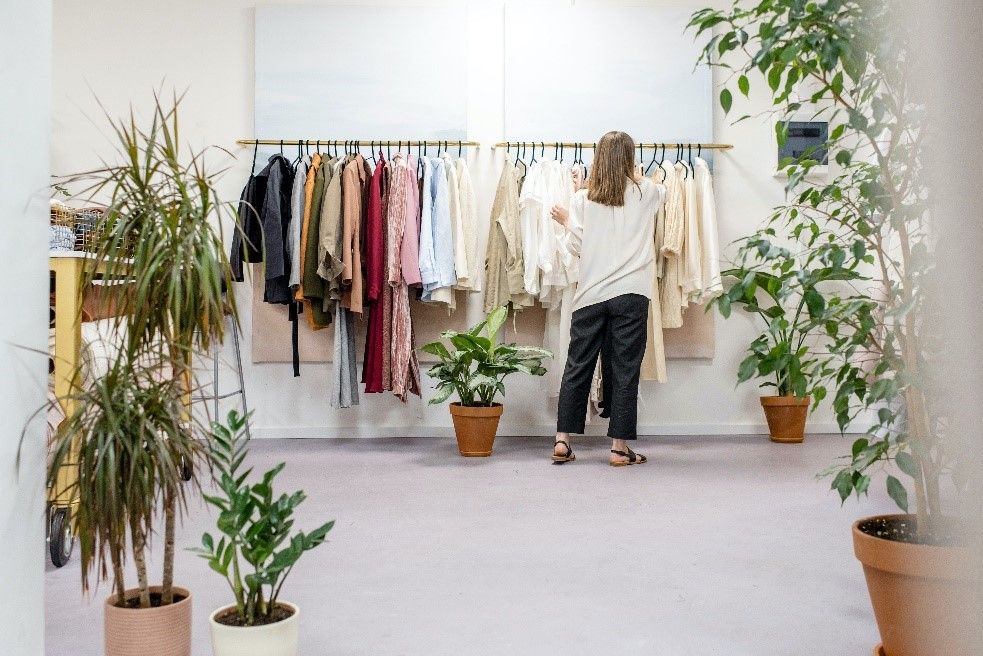Many of us feel the urge to revamp our wardrobe from time to time, but buying new clothes and getting rid of unwanted items doesn’t have to be wasteful! Most clothing brands negatively impact the environment – from harmful dyes to overuse of water to microplastic pollution. Did you know that the fashion industry is responsible for 10% of global carbon emissions? This number could increase if the industry carries on its excessive trend in production. Not to mention that many clothing producers are not socially responsible – continuing to operate their factories under unsafe conditions, and underpaying workers in developing countries to cut production costs.

The fashion industry has a huge carbon, natural resource, and pollution footprint. Choosing sustainable brands and making the conscious choice to consume less can reduce climate change and pollution related pressures on salmon.

Cheaper, fast fashion clothing can use harmful dyes and lesser quality materials that break down in the wash cycle, leaching into and polluting local waterways.
The fast-fashion industry, where clothing items are made cheaply to keep up with trends and be affordable for the average consumer, is a huge problem, and is relatively new. There has been a radical increase in the production of clothing since 2000 – in fact, production has nearly doubled!

Although there are many avenues to donate, reuse or recycle clothing items, approximately 85% of all garments produced end up in the landfill. Fortunately, there are many ways that you can help reduce these shocking figures! Learn more about the impacts of the fashion industry in this Business Insider article.
Check out these tips for making your spring, summer, fall or even winter cleaning more eco-conscious, and maybe even profitable!
Do some good

Donate your used clothing, bedding, kitchen ware, and sports equipment to a thrift store. Most thrift stores raise money for local hospitals, shelters, and other positive causes, so your donations to or purchases from thrift stores will help out a worthy cause.
You can also donate the clothes directly to a shelter or a donation drop off bin around your community.
Not to mention, shopping at thrift stores provides fun opportunities to find unique, affordable items.
Make some extra cash
Have high quality clothing items that you just don’t reach for? Consider consignment!
Consignment stores like Turn About simplify selling quality garments. Through these shops, you can sell your used clothing without the extra steps of taking photos of the garments and managing requests and questions about the items. This is a great option if you have high value items that you need help selling. Through consignment, you can make some extra cash by receiving a portion of the sales of your items, or by having the buyer offer you a price for your items on the spot. Often, these stores are particular about which brands, materials or styles they accept – but make an appointment or stop by and speak with their buyers to find out how each store works.
Use apps/websites to help circulate quality used items within your community! Varage Sale (aptly named because it is like holding a garage sale, virtually) and Facebook Marketplace are great tools to help you sell any items that you no longer need - from furniture to shoes to handmade items! Simply upload photos and add the details of your item(s), set the price, and watch the messages come flooding in!
Online platforms are especially helpful for families. Kids grow out of clothing and shoes so quickly, so opting for second-hand items is a great move to reduce your environmental impact, as well as the impact on your wallet.

Invest for the long haul
If you need to purchase a new item, make it a thoughtful purchase. Do some research, and maybe save up to invest in key pieces that are well made and will last a long time.
Many tried and true staple brands such as Levi’s are committed to making quality items that last, and on improving their standards of production. In 2021, Levi’s launch their campaign “Buy Better, Wear Longer,” emphasizing their brand messaging that Levi’s denim products are meant to be worn throughout a person’s life, not just for a season.
Support brands doing the right thing

Levi's has also committed to using new innovations to reduce their water consumption during the processesing of their products. Read more about the brand’s commitments to being eco-conscious in this Branding Forum article.
Want to find out about the eco-consciousness of other brands that you love? Try out the Good on You app or website to explore the ethical and environmental ratings of thousands of clothing producers. Plus, get tips on building your wardrobe with staples from the most highly rated brands with the lowest environmental impacts, and read about current issues like how fashion trends are leading consumers to support fast fashion.
Don’t forget to buy products made from natural materials like cotton, linen, and leather since they are durable and do not contribute to microplastic pollution in your laundry.

Another simple way to reduce your contribution to textiles waste is by making your clothing last longer. Do some garments like socks have a hole in them? You can easily stitch it up to get some more life out of that pair.
Larger holes in jeans can be patched up using fun coloured or patterned fabrics. You can stitch by hand, or use one or two simple stitches on a sewing machine. Get creative with your mending – get inspired, and learn some tips and tricks for every kind of hole or tear!
Fast-fashion garments that are typically made with synthetic materials also tend to break down faster, and the cheap production means these pieces tend to fall apart after a few washes – which means more stitching for you! The lives of these garments are short, and their low value means you will be less likely to resell these items. When you invest in well made garments made from natural materials, they are much more likely to last.
Find more tips on Metro Vancouver's Think Thrice page, including how to repair or recycle your tired clothes and advice on investing in quality pieces.
Photo credits: Ksenia Chrnaya from Pexels, Eiko Jones, Tom Fisk from Pexels, Antoni Shkraba from Pexels, Filipe Vieira on Unsplash, and Reuben Kim on Unsplash.